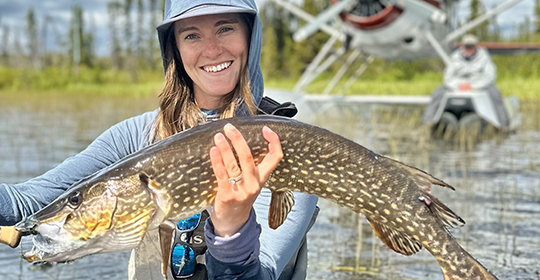Battling Big Fish
By Melissa Ceren LPCC, M.Ed., Ed.S.
Feb 16, 2024
With some preparation and implementation of technique, you can battle and land large trophy fish on a fly rod.
Before you hook into the “big one”, there are a few things that you need to know in order to be successful.
Techniques for battling big fish:
1. Setting the drag
If your drag is too tight on your fly fishing reel, the fish may take a run out and break off. If it’s too loose, your fly line can shoot backwards into the reel and get knotted up, also causing you to lose the fish.
It’s important to set the drag using the knob on the side of the reel (unless it’s a click and pawl in which case you increase/decrease hand pressure to adjust drag). When you pull out the fly line to check the drag, there should be slight pressure from the drag on the line.
2. Don’t pinch that line!
The beginner’s tendency is to pinch the fly line underneath their pointer finger rather than letting the fish run and tire out. That tendency exists because they don’t want to lose their new “personal best.” However, “horsing in” the fish will greatly increase your odds of losing it, especially if your leader or tippet is lighter test (not able to withstand much force without breaking). Instead, let the fish run and then reel in short spurts in between the runs when the fish lets up for a moment.

3. Fighting the fish
Big fish got to be the size they are because they are smart. They have become well versed in getting away from the average angler. Common tactics they use include diving below shelter such as a log, leaping into the air, head thrashing aggressively, and running quickly downstream or into fast water.
Whenever possible, you want to stay downstream of the fish. When a fish is able to get downstream of you, there is an increased likelihood of the hook popping out of its’ mouth. If a fish makes a downstream run, follow it down with pace.
4. Side pressure
The most crucial tip I have learned in fighting big fish is to provide side pressure, which means to lower the rod so that it is parallel to the surface of the water. This gives you more power over the directionality of the fish because you are able to turn its head. When it’s close enough to net, then return to upward positioning and lift your rod up high.
5. Trust the process
Part of the learning process is losing a few heartbreakers. Stay motivated and your persistence and ability to learn will be rewarded!









